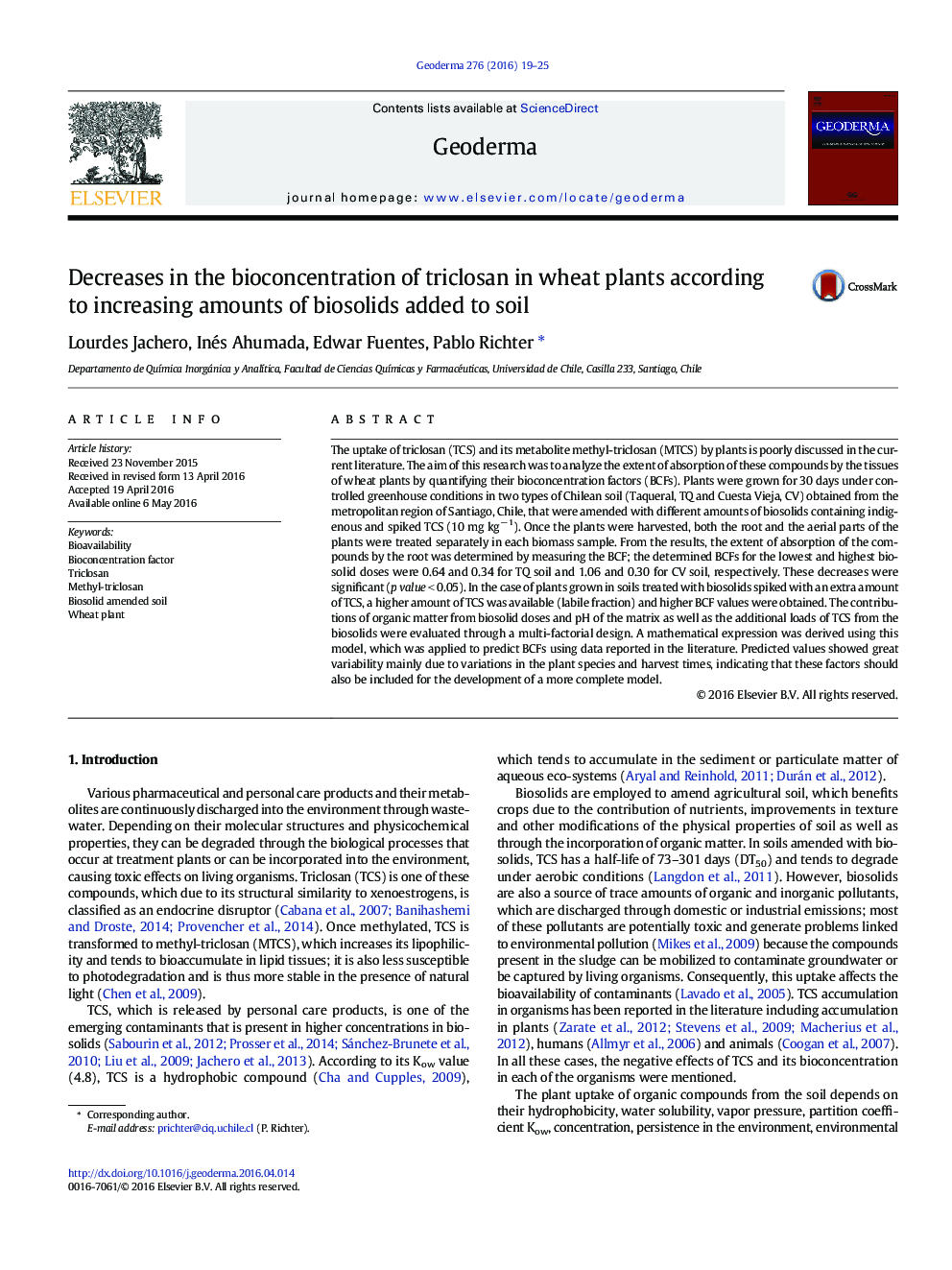| Article ID | Journal | Published Year | Pages | File Type |
|---|---|---|---|---|
| 4572927 | Geoderma | 2016 | 7 Pages |
•The organic matter provided to the soil by biosolid decrease the bioconcentration of TCS•The extent of ionization of TCS affects both its mobility and its bioconcentration factor•The BCF shows great variability due to the plant species and harvest time.•The additional load of TCS encourage presence of MTCS in the plant•A multilevel factorial design was applied to predict the BCF of TCS
The uptake of triclosan (TCS) and its metabolite methyl-triclosan (MTCS) by plants is poorly discussed in the current literature. The aim of this research was to analyze the extent of absorption of these compounds by the tissues of wheat plants by quantifying their bioconcentration factors (BCFs). Plants were grown for 30 days under controlled greenhouse conditions in two types of Chilean soil (Taqueral, TQ and Cuesta Vieja, CV) obtained from the metropolitan region of Santiago, Chile, that were amended with different amounts of biosolids containing indigenous and spiked TCS (10 mg kg− 1). Once the plants were harvested, both the root and the aerial parts of the plants were treated separately in each biomass sample. From the results, the extent of absorption of the compounds by the root was determined by measuring the BCF; the determined BCFs for the lowest and highest biosolid doses were 0.64 and 0.34 for TQ soil and 1.06 and 0.30 for CV soil, respectively. These decreases were significant (p value < 0.05). In the case of plants grown in soils treated with biosolids spiked with an extra amount of TCS, a higher amount of TCS was available (labile fraction) and higher BCF values were obtained. The contributions of organic matter from biosolid doses and pH of the matrix as well as the additional loads of TCS from the biosolids were evaluated through a multi-factorial design. A mathematical expression was derived using this model, which was applied to predict BCFs using data reported in the literature. Predicted values showed great variability mainly due to variations in the plant species and harvest times, indicating that these factors should also be included for the development of a more complete model.
